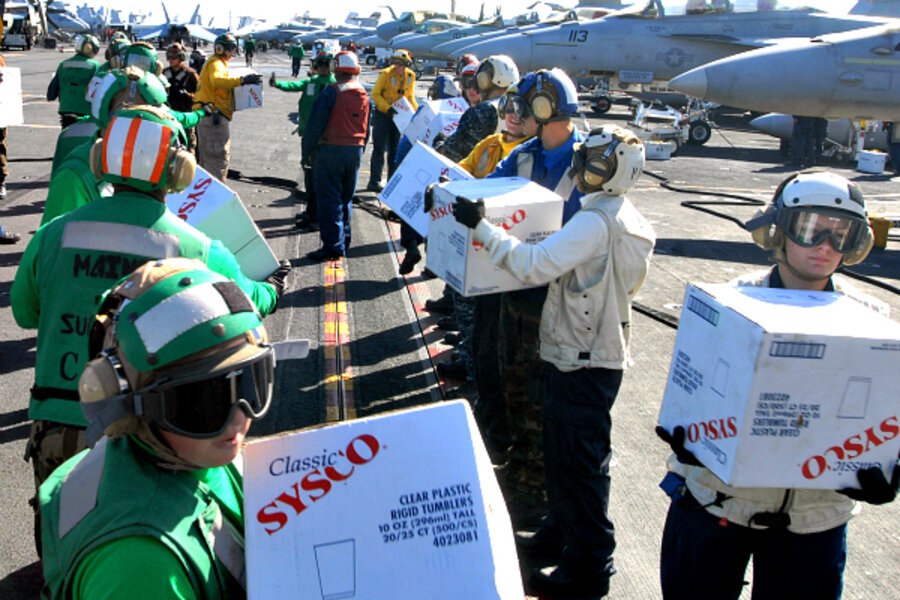US Navy ship to sail the Pacific on a humanitarian mission
Loading...
| Honolulu
The US Pacific Fleet said May 9 that it will send an amphibious dock landing ship to six Pacific island nations over the next several months to provide humanitarian assistance and help people better prepare for disasters.
The USS Pearl Harbor will leave Hawaii on May 24. It will stop first in Samoa and then visit Tonga, the Marshall Islands, Papua New Guinea, Kiribati, and the Solomon Islands.
The US Navy has been sending vessels on similar humanitarian missions since 2006, when it sent the hospital ship USNS Mercy to the Philippines, Indonesia, and other Asian countries.
The missions, which cost about $20 million a year, build trust, enhance cooperation, and open dialogues between leaders, Pacific Fleet Commander Adm. Cecil Haney said in a statement. They strengthen relationships that are critical for deterring conflict, he said.
"The US Pacific Fleet is always prepared for battle, but we also operate to preserve the peace," Admiral Haney said.
Last year, the hospital ship USNS Mercy offered cataract surgery, dental fillings, and other aid in Cambodia, Indonesia, the Philippines, and Vietnam. Veterinarians treated livestock like water buffalo and pigs.
This year, the Pearl Harbor will be joined by the Australian ship HMAS Tobruk and the New Zealand ship HMNZS Canterbury.
Australians will lead the mission in Papua New Guinea and New Zealand will lead in Kiribati and Solomon Islands. This is the first time partner nations will be leading individual phases of the mission, the US Navy says.
Canada, France, Japan, and Malaysia will also help deliver aid.
Doctors, dentists, and veterinarians will join the trip, along with experts in public health and disaster response. Many of the professionals are from non-governmental organizations.
Humanitarian missions can have great public relations value for the United States and other participants.
This became particularly clear after the US sent ships and planes to deliver food, tents, and medical care for victims of the 2004 Indian Ocean earthquake and tsunami.
Approval ratings for the U. in predominantly Muslim Indonesia climbed to 38 percent in 2005 from 15 percent two years earlier because of the help, according to a poll by the Pew Global Attitudes Project.
The Navy began sending vessels on annual "Pacific Partnership" tours shortly afterward.
US Navy Capt. Wallace Lovely, commander of Hawaii-based Destroyer Squadron 31, will lead this year's mission.





